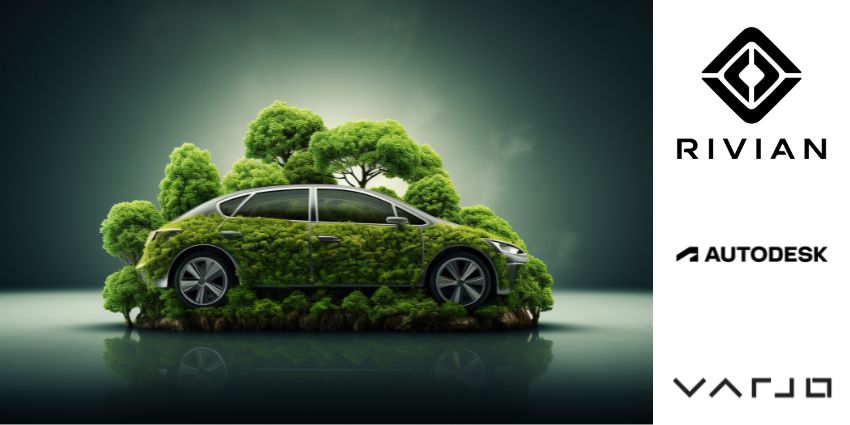Rivian deployed Autodesk’s virtual reality (VR) and mixed reality (MR) solution alongside Varjo headsets to enhance sustainability processes.
- NTT and the Role of Sustainability in the Industrial Metaverse
- Digital Twins, Where Profitability and Sustainability “Coexist”
- Lenovo Outlines Metaverse, Sustainability Pledge
The software, Autodesk VRED, provides full support to virtual and mixed reality and, combined with Varjo’s headsets, allows the design department to work with life-like digital models that enable more detailed design creations.
The pioneering electric car manufacturer has found that not only have these technologies had a major impact on cutting emissions, waste, and costs, it has also accelerated its design process.
Rivian set a goal of reaching net zero emissions by 2040 and achieving greater sustainability.
Varjo published a case study of the implementation in which it describes how Rivian’s design processes have been upgraded by these technological innovations:
“With mixed reality, Rivian is able to combine digital and physical at a much deeper level than before.
“It enables them to better adapt user experiences and solve design challenges earlier.
‘With lifelike and lifesize digital models that have reflections and textures accurately matching the real world, it is easier to answer questions such as is the steering wheel in the right position, could screens cause glare, is the seat positioned correctly and so on.’
Going Green with Autodesk and Varjo
With operations and teams spread around the globe that require regular collaborative work to be carried out between them, Rivian wanted to find a way to optimise remote collaboration in order to reduce travel time, emissions, and expenses.
A further challenge was reducing the amount of raw material used in a car’s manufacturing lifecycle, which includes the materials used to build physical mock-ups. The manufacturer was, therefore, looking for software and technologies that could help to cut back on this process.
The solution that Rivian landed on was a combination of Autodesk VRED and Varjo headsets.
Autodesk’s VR and XR technology “helped Rivian to overcome the geographical barriers of dispersed operations”, according to Varjo. It has also enabled Rivian to use digital models instead of raw materials like wood and clay, which includes the ability to make changes in real-time.
The results so appear to confirm the theory, with Autodesk’s technology saving on time, cost, and materials. For example, a clay model design costs about £5,0000, uses around 150kg of materials, and takes approximately one week. Now, the same process takes less than one hour using VR; it can be done at any time, and the company has saved one million dollars per vehicle program.
Trevor Greene, Lead Visualisation Design at Rivian Automotive, outlines the key benefits of deploying Autodesk VRED and Varjo:
“At Rivian, design time is of the essence. Together with VRED, Varjo has taken a lot of time and money out of the process and lets us iterate and integrate more quickly than ever before.
Greene continues: “We can make changes and apply a whole range of new materials and know exactly what the final product will be like. Varjo helps keep Rivian on the path of moving the industry forward.”
In March this year, the design company HUSH used augmented reality to showcase its architectural designs and increase efficiency and cost-savings.







